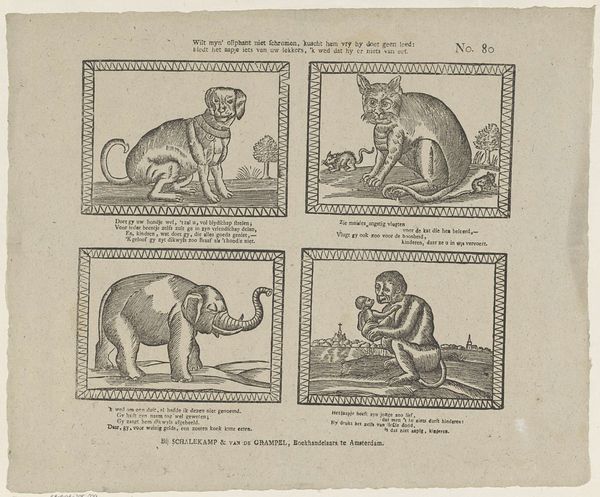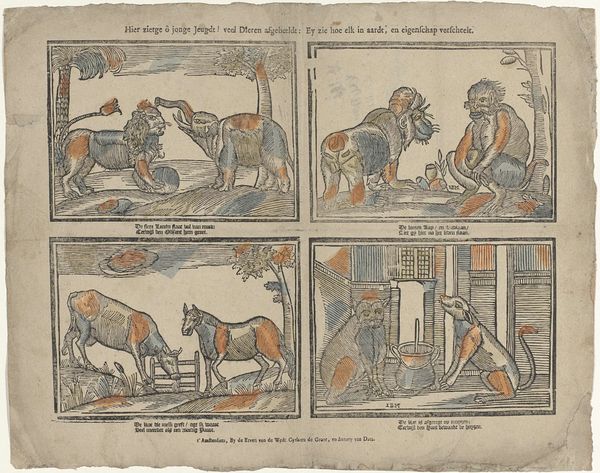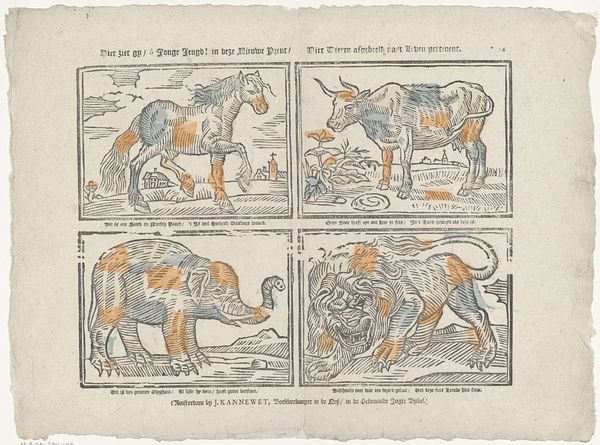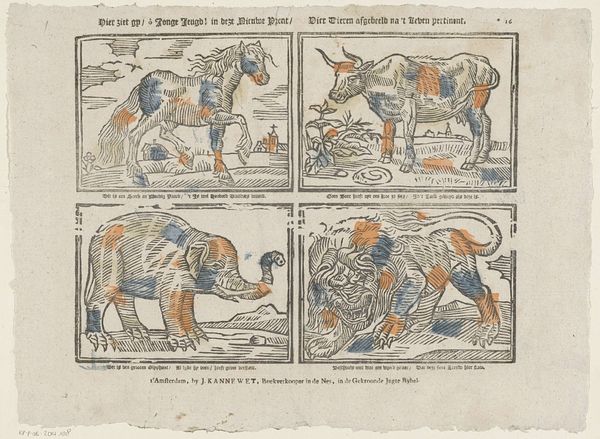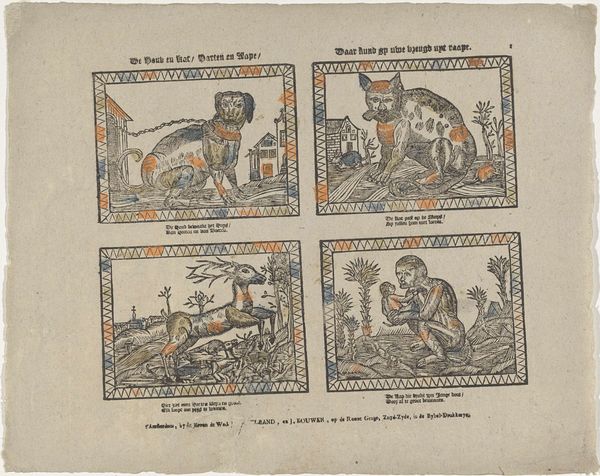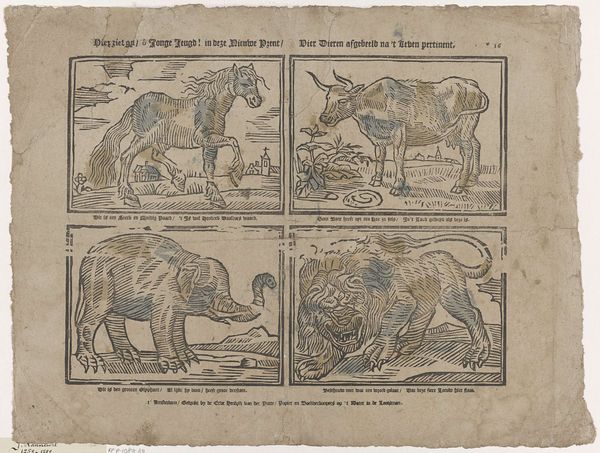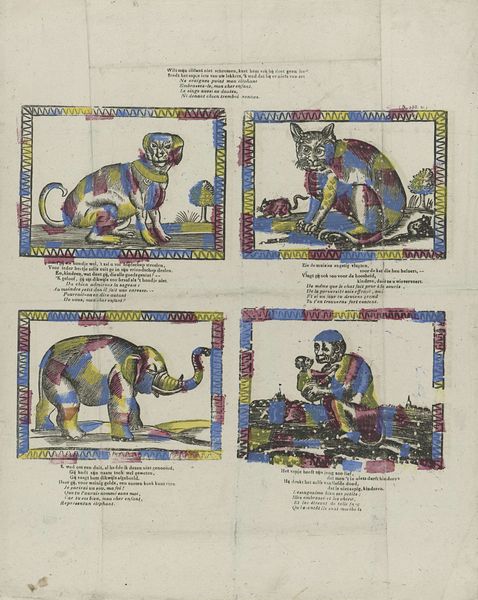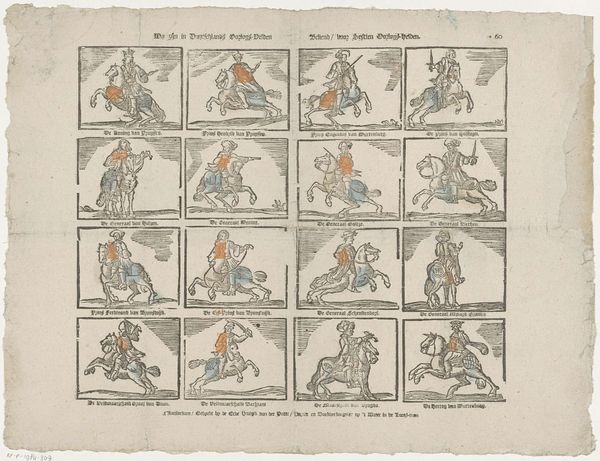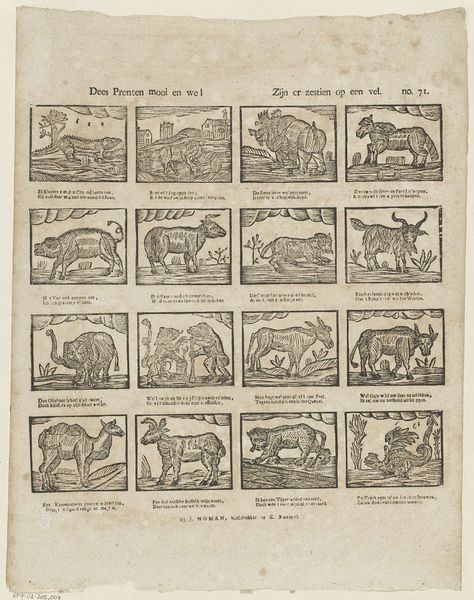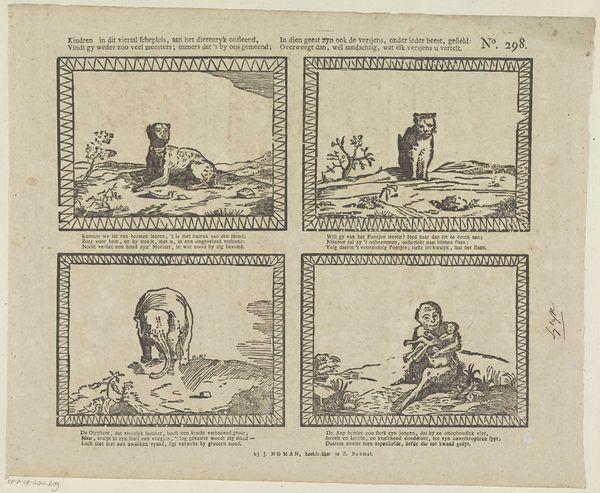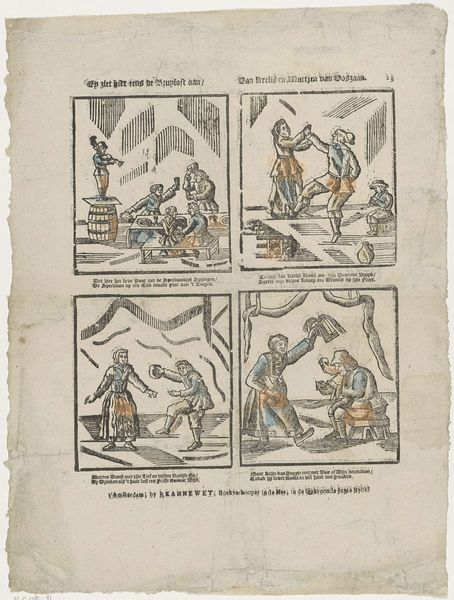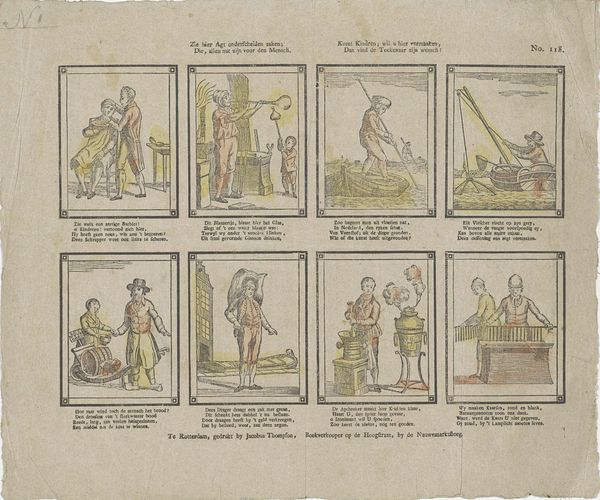
De hond en kat / oliphant en aape / Daar kunt gij uwe vreugt uyt raape 1725 - 1780
0:00
0:00
johannesiikannewet
Rijksmuseum
print, etching, engraving
#
aged paper
#
toned paper
#
light pencil work
#
animal
#
dutch-golden-age
# print
#
etching
#
dog
#
sketch book
#
figuration
#
personal sketchbook
#
ink colored
#
sketchbook drawing
#
watercolour illustration
#
genre-painting
#
storyboard and sketchbook work
#
sketchbook art
#
engraving
Dimensions: height 305 mm, width 400 mm
Copyright: Rijks Museum: Open Domain
This print, "De hond en kat / oliphant en aape / Daar kunt gij uwe vreugt uyt raape," was made in Amsterdam by Johannes Kannewet, a bookseller, with etching techniques. It seems that the artist draws a comparison, or maybe even equates, a dog, cat, elephant, and monkey. But this is not an innocent depiction of animals for the amusement of the viewer. It reflects the colonial gaze of 18th-century Europe, specifically the Dutch Republic, on the rest of the world. Consider the social and economic structures that were in place at the time. The Dutch Republic was a major player in the global trade network, including the trade of enslaved Africans, and this print reflects the way in which different races of people were ranked and valued. We, as historians, can use sources like trade records, colonial documents, and travelogues to shed light on the meaning of this image, and better understand the cultural context in which it was made.
Comments
No comments
Be the first to comment and join the conversation on the ultimate creative platform.
